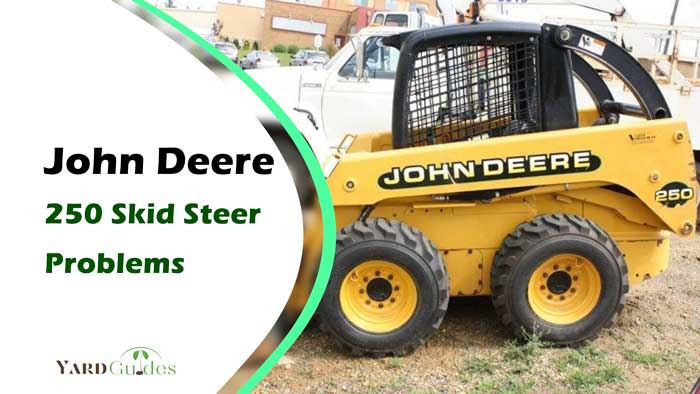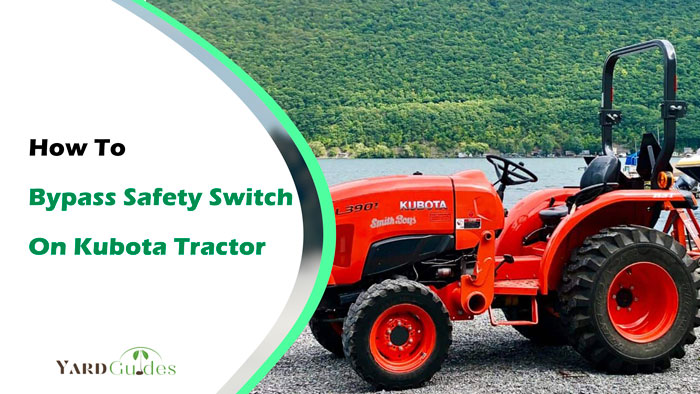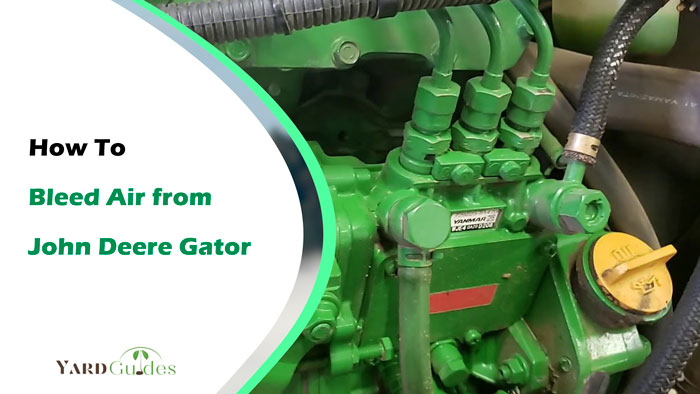If you’re a proud owner of a John Deere 250 skid steer, you should be aware of common problems that may arise and how to fix them. Yes, even the best machines eventually experience problems.
So, what are the John Deere 250 skid steer problems? Some common cases include ignition switches, hydraulic locks, and electrical issues. The vehicle also has engine stalling, parking brakes, and skid injector problems. Other minor issues include loose engine mounts, fuel filter chocking, seat belt switch and seat pressure switch.
In this article, we’ll provide a comprehensive guide to identifying and fixing common problems. So if you want to keep your John Deere 250 skid steer in top condition, read on to learn more.
An Overview of Problems and Quick Solutions
Here is a table illustrating solutions for each problem:
| Problem | Solution |
| Hydraulic lock problems | Inspect your vehicle wiring. Repair and replace any loose or worn-out parts |
| Electrical issues | Check the fluid, inspect and adjust pads/shoes, and replace worn or damaged components |
| Engine stall and stopping | Check fuel, replace the dirty or clogged filter, inspect and repair the fuel system |
| Parking brake problems | Check the fluid, inspect and adjust pads/shoes, replace worn or damaged components |
| Skid injector problems | Clean and replace injectors, check fuel pressure and flow |
| Loose engine mounts | Tighten or replace engine mounts |
| Fuel filter choking | Replace dirty or clogged filter |
John Deere 250 Skid Steer Problems and Solutions:
Here is an in-depth explanation of these problems and their solutions:
1. Hydraulic Lock Problems
Hydraulic lock problems can be caused by various factors, including bad hydraulic pressure sensors or safety interlock sensors, as well as wiring problems with the sensors.
Essentially, the sensors can lock up if they think you are not in the vehicle, leading to a shutdown of the hydraulic system and preventing you from operating the machine. If you have leaks in your hydraulic system, you will also experience this problem.
Solution
- First, ensure that you are sitting in the machine’s seat and that your seatbelt is fastened. This will help to avoid any false signals being sent to the hydraulic system.
- If this does not solve the problem, you can try checking the wiring of the sensors and ensuring that they are properly connected and free from damage.
- Check the hydraulic fluid levels and ensure that they are at the correct level. Additionally, you can inspect and replace any damaged hydraulic hoses or fittings, as these can cause problems with the hydraulic system.
2. Electrical Issues
These issues can manifest in various ways, such as dead batteries, blown fuses, faulty wiring, and malfunctioning alternators. You could also have faulty ignition, seat belt and seat pressure switches.
One specific issue that operators may face is a malfunctioning instrument cluster. This can cause various problems, including inaccurate readings of the vehicle’s speed and fuel levels.
Solution
- Check the instrument cluster connections to ensure they are secure and free from corrosion. You can use a multimeter to test the connections’ voltage and ensure that they are within the recommended range.
- If the connections are secure, the next step is to check the fuses to ensure they are not blown or damaged.
- Replace any blown fuses with a new one of the same amperage rating.
- If the connections and fuses are not the issues, you may need to replace the instrument cluster. And for seat switches, you may need to replace the sensors.
3. Engine Stall and Stopping
One of the main symptoms of this problem is that the engine will shut down or stall without warning. Letting the skid steer sit for several minutes and then reducing the RPM will start again. This can repeatedly happen, making it hard to get any work done.
The most common causes of engine stalling are spark plug issues. Faulty or old plugs can lead to a weak spark, causing the engine to stall or stop. Other causes include a clogged air filter, dirty fuel injectors, or low fuel pressure.
Solution
- Start by checking the spark plugs and replacing them if necessary.
- Also, check the air filter and clean or replace it if it’s dirty.
- Also, check the fuel injectors and the fuel pressure to ensure they operate correctly.
If none of these fixes work, it may be a more significant issue, such as a problem with the engine control module or the wiring.
- Inspect your wiring and replace any worn-out parts. If this doesn’t fix it, replace your engine control module.
4. Parking Brake Lock
This is a common problem in John Deere 250 skid steers. The parking brake is responsible for locking the wheels and keeping the machine from moving when it’s parked. If you experience a parking brake lock problem, the machine cannot be used unless you solve the lock or override solenoid valves.
Several factors, including broken springs, a faulty parking brake switch, wrong hydraulic pressure, or a wiring harness malfunction, can cause the parking brake lock issue.
Solution
- Inspect the brake switch, hydraulic pressure, and wiring harness for any damage or issues. If the switch is faulty, you may need to replace it.
- If the hydraulic pressure is low, you’ll need to check the hydraulic lines and look for leaks.
- If the problem persists, check the brake calipers and ensure they’re properly lubricated to ensure smooth movement.
5. Skid Injector Problems
Various factors, including fuel system blockages, worn injectors, or low fuel pressure, can cause skid injector problems. In some cases, it may also be caused by electrical issues such as faulty wiring, a bad fuel injector driver module or failed sensors.
Solution
- Check for any blockages in the fuel lines or filters that may be causing the problem.
- Additionally, check the fuel pressure to ensure it’s within the manufacturer’s specifications.
If the problem persists, it may be due to worn injectors that need to be replaced.
- Check the wiring and sensors and replace any faulty components if the issue is related to electrical problems.
6. Loose Engine Mounts
When the engine mounts are loose, the engine can vibrate excessively, causing damage to other components and reducing the machine’s lifespan.
Some causes of loose engine mounts include worn-out or broken engine mount bushings, loose bolts, or faulty installation.
Solution
- Inspect the mounting bolts and tighten them to the recommended torque.
- If the bolts are loose or missing, replace them with new ones.
- Additionally, check the engine mount bushings for wear or damage and replace them if necessary.
- Finally, ensure the engine is installed correctly, and all the components are properly aligned.
7. Fuel Filter Choking
The fuel filter in a John Deere 250 skid steer is designed to keep debris and contaminants out of the fuel system, ensuring optimum engine performance.
However, the fuel filter can become clogged over time, causing engine problems and reduced power.
Solution
- The best solution to fuel filter choking is to replace the fuel filter regularly.
- In addition, it is essential to use high-quality fuel.
- Keep the fuel tank clean to prevent clogging of the filter.
Conclusion
You should be aware of the common John Deere 250 skid steer problems if you purchase it. With this knowledge, nothing will hit you by surprise. You will always be prepared to combat the known issues as soon as they kick in.
Besides, the key to keeping the machine in top condition is identifying these issues early and applying the necessary solutions. Proper maintenance of the machine is also crucial to its performance and longevity. By regularly checking the machine’s systems, such as the hydraulic and electrical systems, you can avoid more costly repairs in the future.



